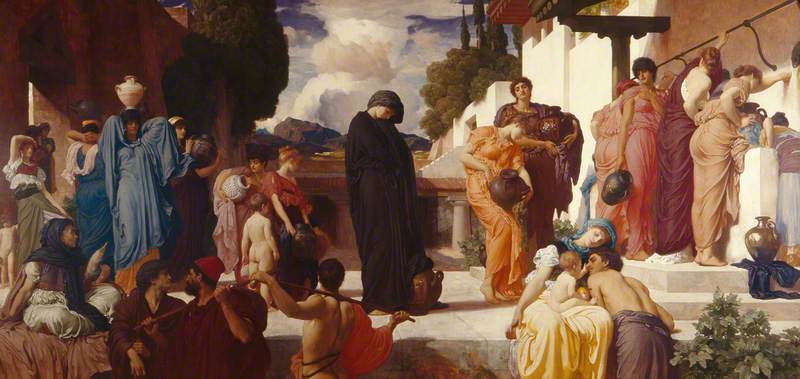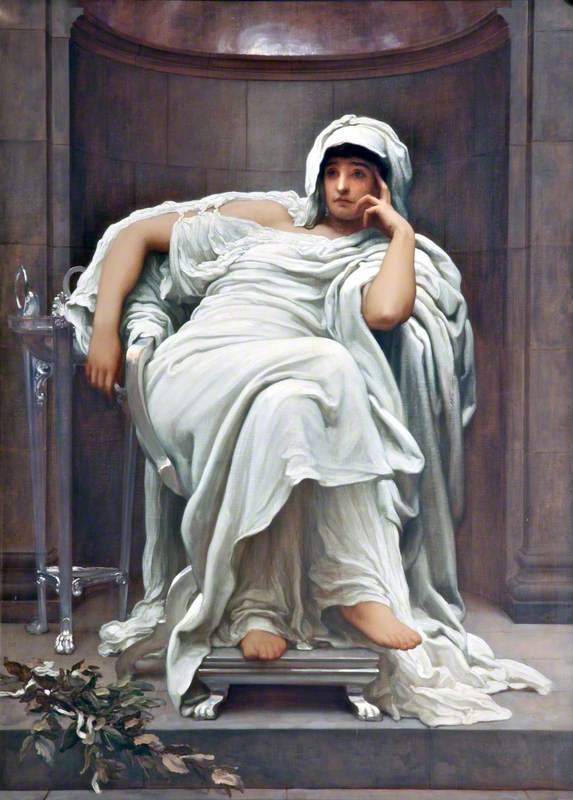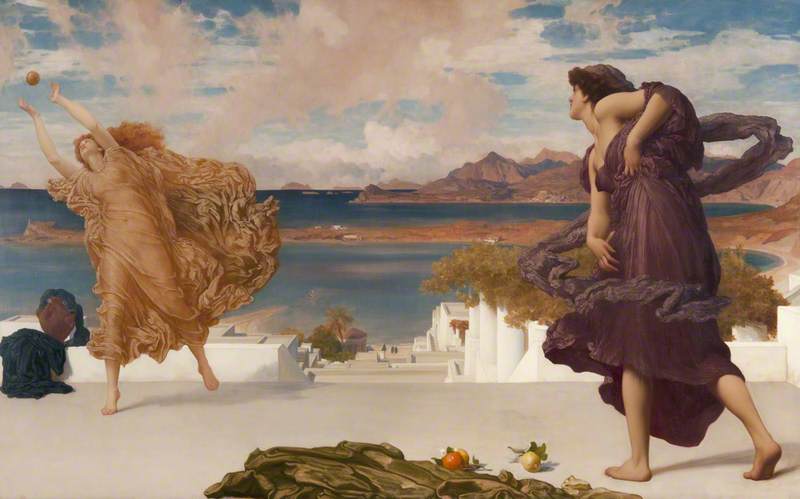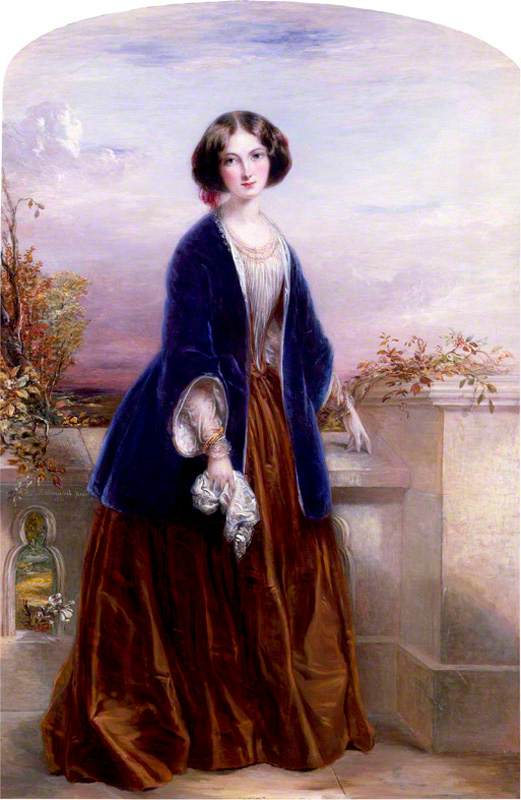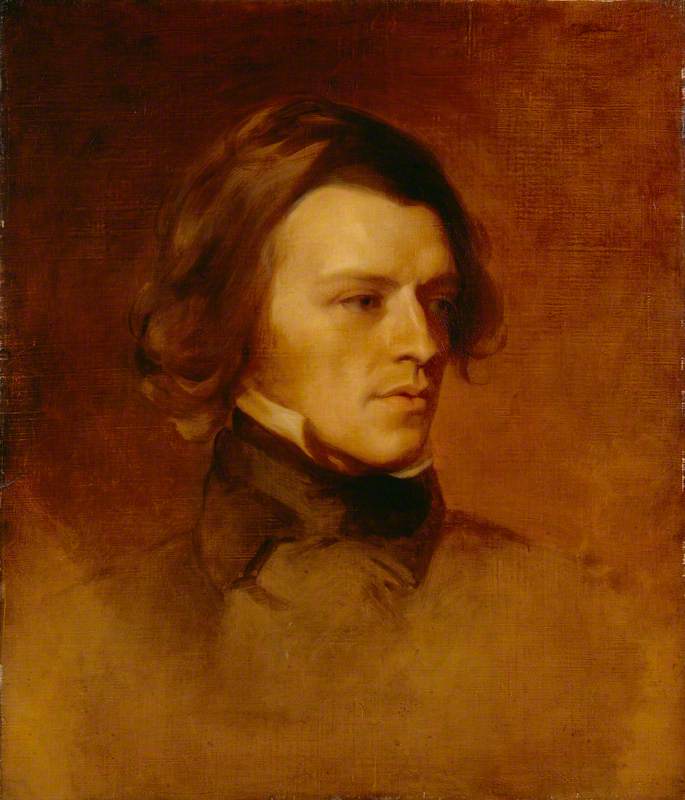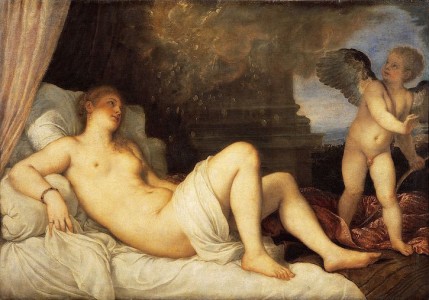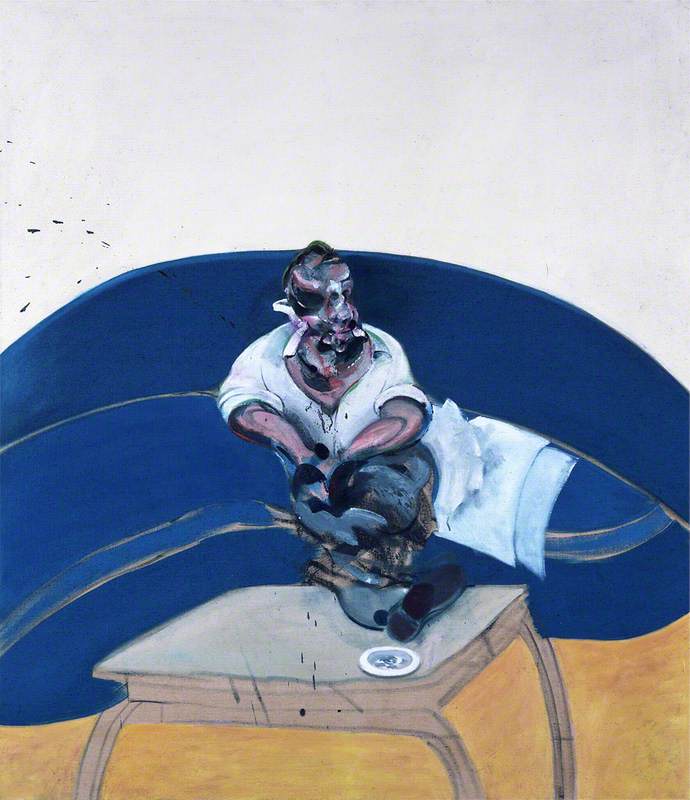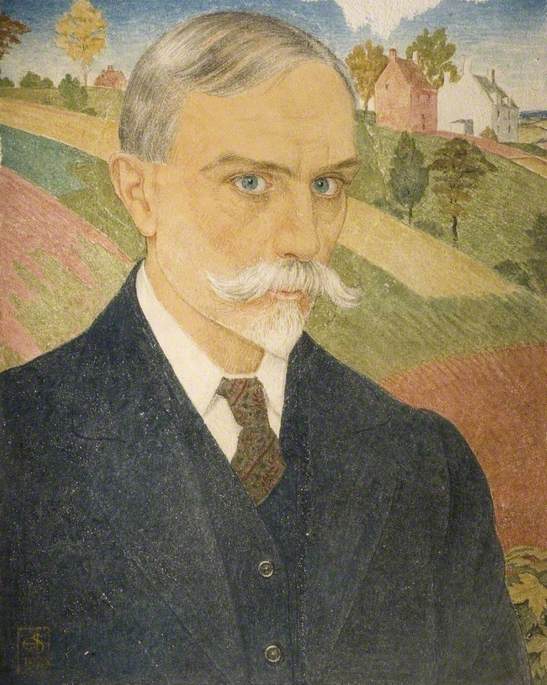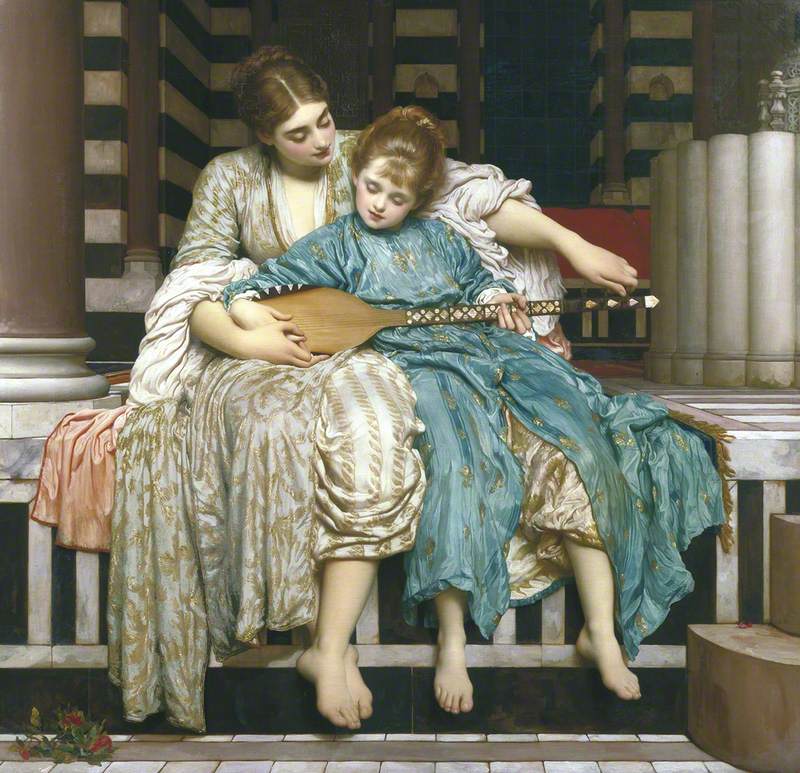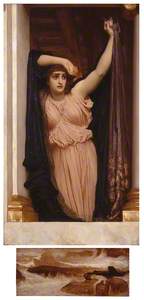Frederic Leighton was perhaps too smooth and too patrician for his own good. His paintings and sculpture seem at times almost incidental to his real role as a great Victorian figure, a man who could have stepped from the pages of an Anthony Trollope novel. When Whistler was once surrounded by a group of women cooing over Leighton's multiple gifts as an orator, linguist, musician, President of the Royal Academy and so on, he was forced to remind the acolytes that 'H'm, paints too, don't he, among his other accomplishments?'
Frederic Leighton, Baron Leighton
1881
George Frederic Watts (1817–1904) 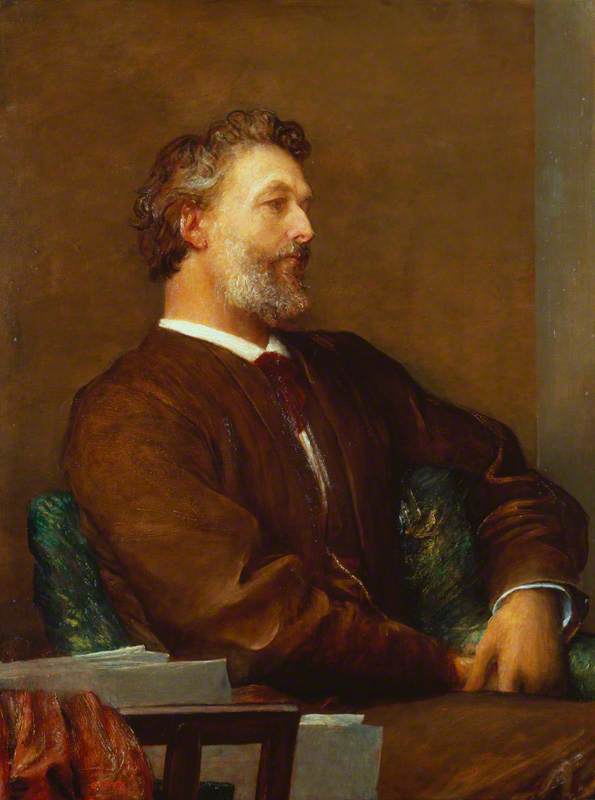
Life did indeed come easy to Leighton and honours followed thick and fast, a knighthood and a baronetcy being just two. But of course he was no passive recipient and had earned his place in both society and art. There were, for example, few genres he didn't touch: mythology, Biblical stories, portraiture, landscapes, genre scenes and sculpture all emerged, seemingly effortlessly, from his hand. A continental training allied to great natural facility gave him a broad overview and reach few of his peers could match.
In that high-Victorian manner, he was serious too. His own sexuality was something of a mystery but, like so many of his contemporaries, he too was disquieted by 'dreams of fair women'.
The majority of his pictures feature beautiful, languorous girls and when he painted them – Flaming June and Psyche, Andromache and Faticida – he brought to them a luscious technique and an intuitive sympathy.
Sometimes his pictures are silly, Greek Girls Playing at Ball in the Dick Institute in Kilmarnock for example, but that is a result of Leighton overreaching himself: most are full of poetry and pathos.
A perfect example is his meltingly poignant The Last Watch of Hero, 1887, in Manchester Art Gallery.
Here he has eschewed the Mediterranean sunlight – learnt on his travels – that he liked to use to illuminate his visions of the Classical world and shows his heroine lit by a sort of half light. It is appropriate, of course, since Hero, a priestess of Aphrodite, is waiting at her window for her lover Leander to swim the Hellespont to join her. He will never make it to her, as Leighton's predella panel of the drowned swain on a wave-washed rock shows.
Hero's agony as the realisation begins to dawn is palpable: her huge doe eyes – such a signature Leighton feature – begin to fill with tears and her hand clutches at her window curtain. And how beautifully painted she is in a softly-flowing peach tunic modelled on the fourth century BC Tanagra statuettes that enchanted Leighton and his fellow Aesthetic painter Albert Moore. The colour scheme ripples, the fabric falls like water and soon, in her grief, Hero will throw herself from her tower into the waves below.
Of course the painting is operatic, melodramatic even. Of course it is an otherworldly fantasy. It would though take the flintiest of hearts not to read and to share the girl's pain or to see how skilfully Leighton has painted the very act of a heart breaking.
Michael Prodger, art critic

